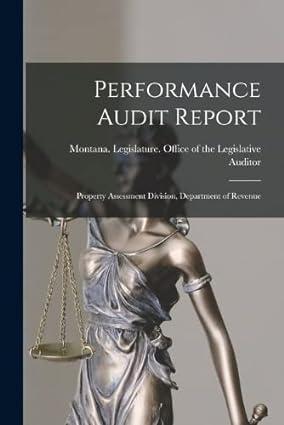Question
The following tests of controls and substantive tests of transactions audit procedures for acquisitions and cash disbursements are to be used in the audit of
The following tests of controls and substantive tests of transactions audit procedures for acquisitions and cash disbursements are to be used in the audit of Ward Publishing Company. You concluded that internal control appears effective and a reduced assessed control risk is likely to be cost beneficial. Wards active involvement in the business, good separation of duties, and competent controller and other employees are factors affecting your opinion.
PART I:
Tests f Controls and Substantive Tests of Transactions Audit Procedures for Acquisitions and Cash Disbursements 1. Foot and cross-foot the acquisitions and cash disbursements journals for 2 months and trace totals to postings in the general ledger. 2. Scan the acquisitions and cash disbursements journals for all months and investigate any unusual entries. 3. Reconcile cash disbursements per books to cash disbursements per bank statement for 1 moth. 4. Examine evidence that the bank reconciliation is prepared by the controller. 5. Inquire and observe whether the accounts payable master file balances are periodically reconciled to vendors statements by the controller. 6. Examine the log book s evidence that the numerical sequence of checks is accounted for by someone independent of the preparation function. 7. Inquire and observe that checks are mailed by D. Ward or someone under his supervision after he signs checks. 8. Examine initials indicating that the controller balances the accounts payable master file to the general ledger monthly. 9. Select a sample of entries in the cash disbursements journal and a. Obtain related cancelled checks and compare with entry for payee, date, and amount and examine signature endorsement. b. Obtain vendors invoices, receiving reports, and purchase orders, and 1. Determine that supporting documents are attached to vendors invoices. 2. Determine that documents agree with the cash disbursements journal. 3. Compare vendors names, amounts, and dates with entries. 4. Determine whether a discount was taken when appropriate. 5. Examine vendors invoices for initials indicating an independent review of chart of account coding. 6. Examine reasonableness of cash disbursements and account codlings. 7. Review invoices for approval of acquisition by Ward. 8. Review purchase orders and /or purchase requisitions for proper approval. 9. Verify prices and recalculate footings and extensions on invoices. 10. Compare quantities and descriptions on purchase orders, receiving reports, and vendors invoices to the extent applicable. 11. Examine vendors invoices and receiving reports to determine that the check numbers are included and the documents are marked paid at the time of check signing. c. Trace posting to the accounts payable master file for name, amount, and date. 10. Select a sample of receiving reports issued during the year and trace to vendors invoice and entries in the acquisitions journal. a. Compare type of merchandise, name of vendor, date received, quantities, and amounts. b. If the transaction is indicated in the acquisitions journal as paid, trace the check number to the entry in the cash disbursements journal. If unpaid, investigate reasons. c. Trace transactions to accounts payable master file, comparing name, amount, and date. Required: Prepare all parts of a sampling data sheet through the planned sample size for the preceding audit program, assuming that a line item in the cash disbursement journal is used for the sampling unit. Use either nonstatistical or attributes sampling. For all procedures for which the line item in the cash disbursements journal is not an appropriate sampling unit, assume that audit procedures were performed on a nonsampling basis. For all tests of controls, use a tolerable exception rate of 5%, and for all substantive tests of transactions, use a rate of 6%. Use an ARACR of 10%, which is considered medium. Plan for an estimated population exception rate of 1% for tests of controls and 0% for substantive tests of transactions. Prepare the data sheet using the computer (also applies to Part II)
|
| Planned Audit | |||
| Description of Attributes | EPER | TER | ARO (10%) | Initial sample size |
Step by Step Solution
There are 3 Steps involved in it
Step: 1

Get Instant Access to Expert-Tailored Solutions
See step-by-step solutions with expert insights and AI powered tools for academic success
Step: 2

Step: 3

Ace Your Homework with AI
Get the answers you need in no time with our AI-driven, step-by-step assistance
Get Started


